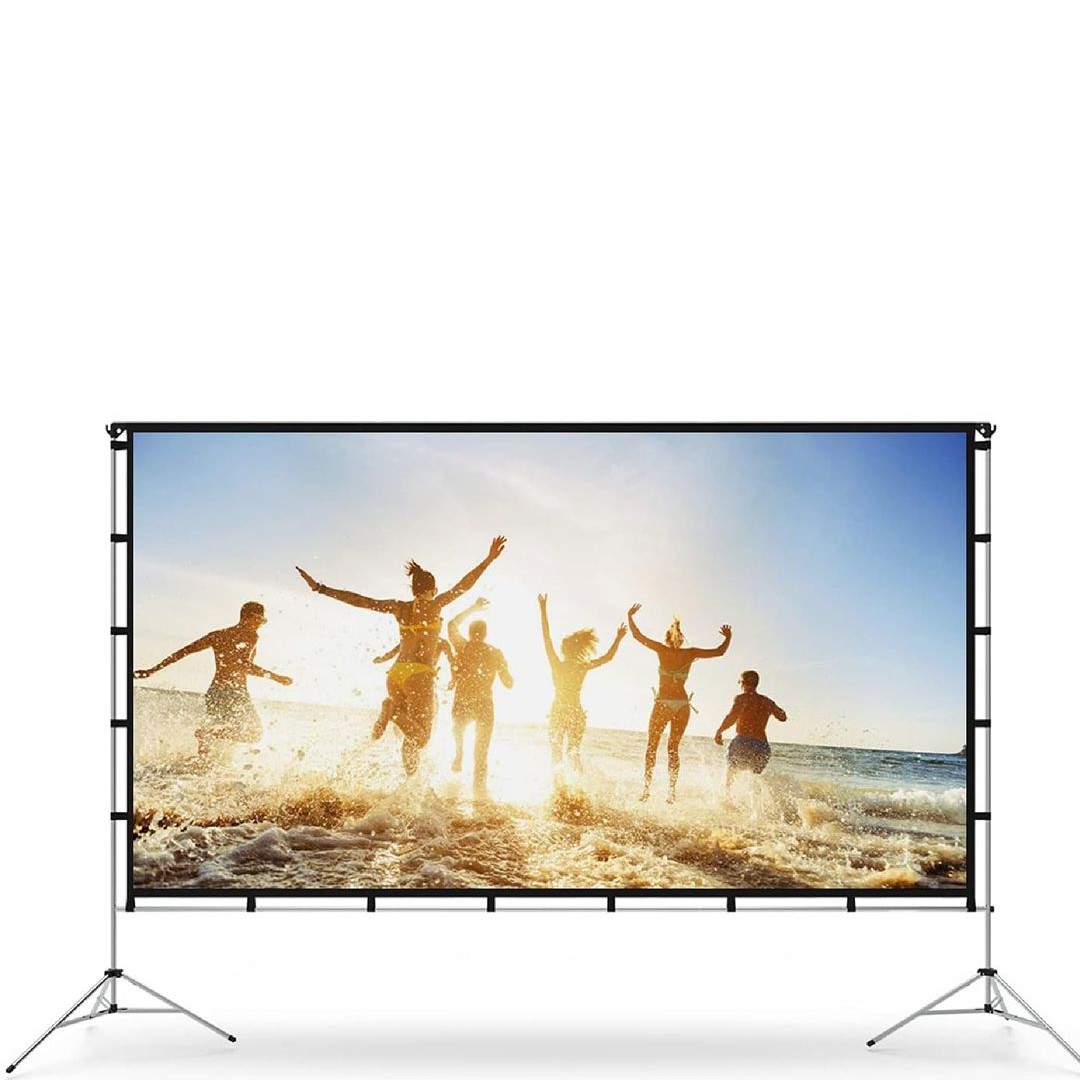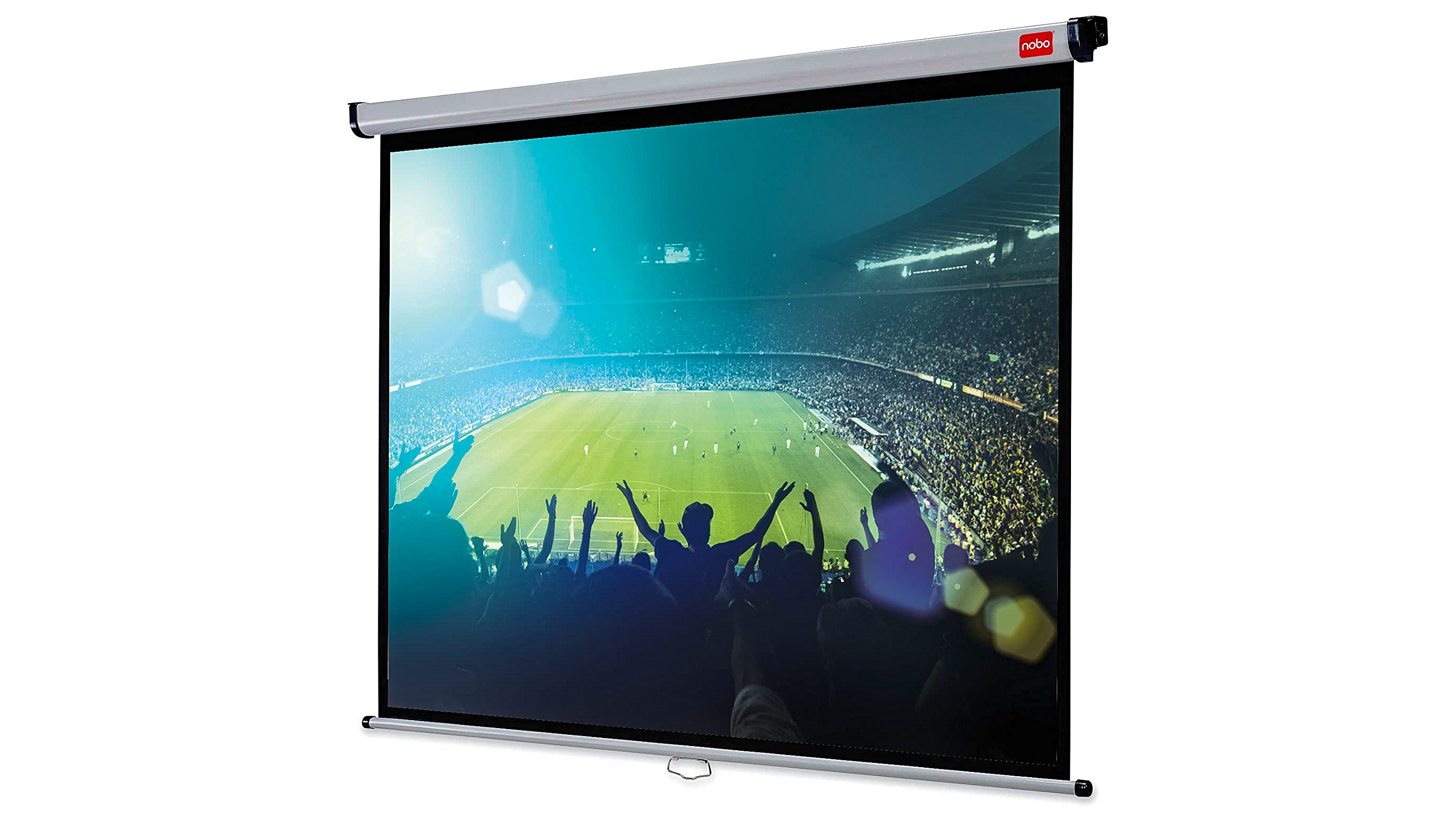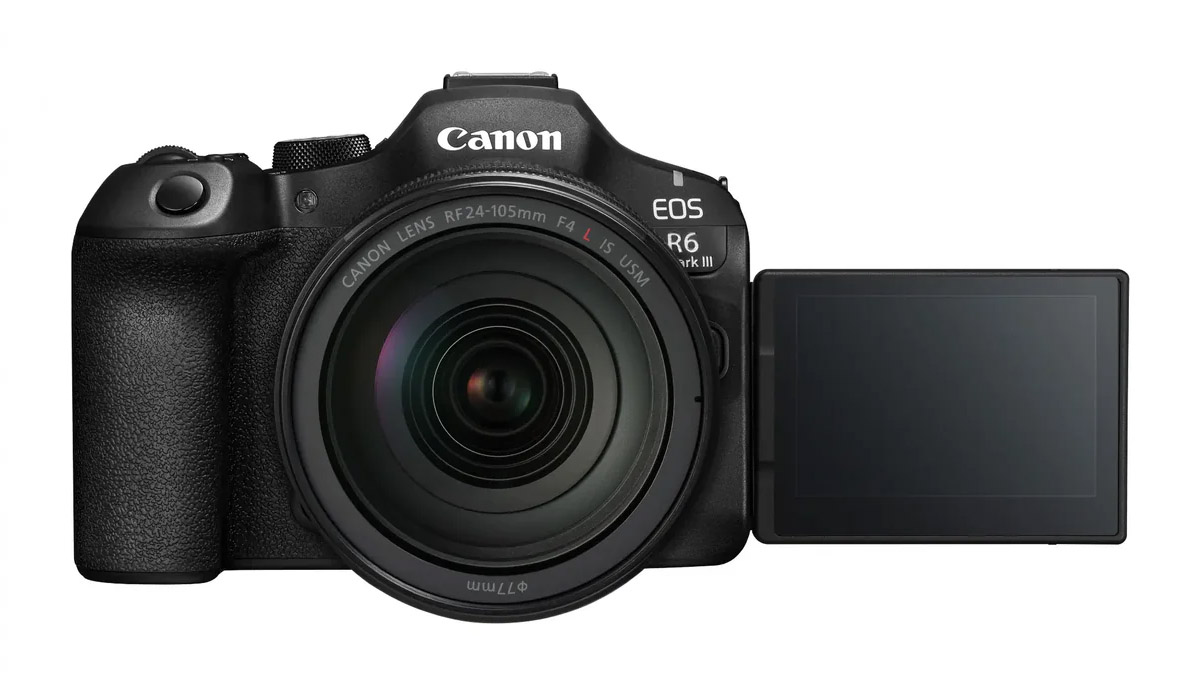Best projection screen: video projector screens for indoors & outdoors
Enjoy TV and movies at super-size, with the best projection screen for indoors and out.

Quick list↴
1. Best overall
2. Best for indoors
3. Best budget
4. Best inflatable
5. Best fixed
6. Best travel
7. Best classroom
8. Best for outings
9. Biggest
FAQs
How to choose
How we test
The best projection screens will give you a much better picture than just projecting onto a wall or bedsheet. Which means you'll enjoy movies, TV, sports and other content so much more. In fact, with cinema prices skyrocketing right now, they'll probably save you money over time. Because when you combine the best video projector with high-res TV and movies from the best streaming services, you really can have the cinema experience at home, in the garden, or on a camping trip.
The best projection screens are tailor-made with special materials to create a super-flat and reflective surface. That means the picture you enjoy will be high quality indeed.
To help you out, we've gathered together the best projection screens available today below. You'll find screens designed for outdoors and indoors, in a variety of shapes, sizes and styles, and with an aspect ratio varying from a cinephile-friendly 2.35:1 through the popular widescreen 16:9, to the classic (or old-fashioned) 4:3.
Quick List

This is the best projection screen for most people. The 120-inch diagonal, 16:9 aspect ratio screen has a lightweight silver aluminum frame with stainless steel components.
Read more below

Perfect for indoor use, this novel design from Epson allows you to widen and shorten the width of the screen so the white surface can perfectly accommodate 16:9 or 4:3 ratio videos.
Read more below

Short of cash? Here's our recommendation for an affordable projection screen, complete with reinforced edges that can be attached to the wall via double-sided tape or plastic hooks.
Read more below

This inflatable projector screen, with a 16:9 widescreen aspect ratio, is a great way to enjoy your big-screen content. And we mean big: this monster is a full 240 inches in diameter.
Read more below

Looking for a fixed projection screen? This model offers great contrast, wide viewing angles, and a quality viewing experience overall, especially if you're projecting at high resolution.
Read more below

Given that most modern TV screens are 40 inches or larger in diameter, this portable screen with those exact dimensions is a good choice for holidays, travel, or school use.
Read more below
The best projection screens
Why you can trust Digital Camera World
Best projection screen for most people
1. Elite Screens Yard Master 2
Specifications
Reasons to buy
Reasons to avoid
To make it easy for you, we'll start with the best projection screen for most people. This 120-inch diagonal, 16:9 aspect ratio screen has a lightweight silver aluminum frame with stainless steel components. It can be assembled in minutes without the need for extra tools, so it's easy to set up your own freestanding ‘big screen’ viewing experience, either indoors or outside.
The foldable ‘go anywhere’ canvas is stowed in a carrier bag when not in use. That makes for easy storage and easy transportation. A black backing is also included to prevent light penetration and enhance picture quality. Note, though, that the makers advise against setting it up outdoors if it’s windy.
Best projection screen for indoors
2. Epson Duet 80-inch Mobile Projection Screen
Specifications
Reasons to buy
Reasons to avoid
Perfect for indoor use, this novel design from Epson allows you to widen and shorten the width of the screen so the white surface can perfectly accommodate 16:9 or 4:3 ratio videos – making a great choice for those who love classic TV series. This means that it has a screen size of 80in in widescreen mode, or 65in in standard format.
This projection screen comes supplied with both a floor stand and a wall mount, so you can adapt it to a wider range of rooms. It's still very portable, though, and has a robust telescope mechanism for expanding the screen from its closed position. There is no case supplied with this one, but there is a carry handle.
Best budget projection screen
3. Vamvo 3-Layer 120-inch Projector Screen
Specifications
Reasons to buy
Reasons to avoid
A large yet inexpensive example of a projection screen complete with reinforced edges that can be attached to the wall via double-sided tape or plastic hooks, this may not be the most sophisticated option in our round-up, but it’s perfect for parties and similar occasions.
In being constructed from a three-layer polyester material, it claims to be thicker than comparable examples on the market. The eyelets mean that it can be suspended in midair too, making it suitable for use on a deck or when on a camping trip. It is usually supplied with a pair of stands, which are probably best used either indoors or on days when there is no wind at all.
The middle layer is constructed of a light shielding material claimed to deliver more vivid images when projected; and yet because of said layer, it does not support double-sided projection. Peace of mind is provided by a two-year manufacturer’s warranty, however, while the construction is said not to crease – a common criticism of inexpensive screens.
Best inflatable projection screen
4. Khomo Gear Inflatable Movie Screen
Specifications
Reasons to buy
Reasons to avoid
Who doesn't like an inflatable? And this blow-up model, with a 16:9 widescreen aspect ratio, is a great way to enjoy your big-screen content. And we mean big: this monster is a full 240in diameter. (Of course, that means you'll need a large space to put it in, and it's not suitable for indoor use.)
Allowing for either front or rear projection, the full jumbo-sized kit includes not just the screen but also an electric blower to inflate it, plus six 30cm ropes and plastic stakes, with a storage bag to keep it all in. Though it looks like something of a monster, its manufacturer suggests that you can have it all set up in around five minutes. To deflate it, just open the zipper.
Best fixed projection screen

5. Elite Screens Sable Frame 2
Specifications
Reasons to buy
Reasons to avoid
Looking for a fixed projection screen? Elite Screens Sable Frame 2 screen is our top pick. It offers great contrast, wide viewing angles, and a quality viewing experience overall, especially if you're projecting at high resolution.
Like our number one pick on this list, this screen uses the company's proprietary CineWhite UHD-B 1.3 gain material, providing extra gain for HDR content in a dark room environment, while black backing eliminates light penetration. The 2.4-inch width frame is nice and sturdy, while the split-frame design facilitates lower shipping costs without sacrificing quality.
This screen is available in a variety of shapes and sizes, including 100-200 inches in 16:9 format, 114, 125, and 144 inches in 16:10 format, and 138 and 158 inches in 2.35:1 format.
Best projection screen for travel
6. Pyle Portable Projection Screen
Specifications
Reasons to buy
Reasons to avoid
Given that most modern TV screens are 40 inches or larger in diameter, this portable screen with those exact dimensions is aimed at the holiday, travel, or school markets. With a simple pull-up and pull-outwards setup, whereby it locks into position thanks to a retractable framework at the rear, the screen is described as heavy-duty. This translates as it being stain and mildew resistant and is constructed of an anti-flame ‘premium’ fabric.
The shape of the screen is 4:3, although a 16:9 image can still be projected across it. And since it’s designed to stand on any flat surface or table, it’s ideal as a quick and easy-to-set-up desktop option that won’t break the bank.
Best projection screen for classrooms
7. Nobo 1902392 Projection Screen
Specifications
Reasons to buy
Reasons to avoid
Nobo is well-known for its flipcharts and whiteboards, and they produce a range of projection screens too, which are particularly well-suited to corporate and college environments.
The Nobo 1902392 Projection Screen is designed to be permanently installed in a room, with the screen being pulled down when needed, and retracted out of sight when not in use. The mechanism means that the screen can be protected from damage, and the wall behind can be used for other things.
It comes with a fixing kit that allows the housing to attached high up a wall or on the ceiling. This particular model has a 4:3 ratio screen, measuring 1750x1325mm.
Best projection screen for family outings
8. Khomo Gear Portable Projector Screen
Specifications
Reasons to buy
Reasons to avoid
Going on a trip with the family? A large projection screen that you can use outdoors is great for camping sites, picnic places, or a garden. But you also want one that's quick and easy to set up. That's why we recommend the Khomo Gear Portable Projector Screen. Assembling this freestanding frame is much like putting together tent poles, and takes about 15 minutes. A nice activity for the family, then, but one that's not too onerous.
Given the size of the screen, it's impressively lightweight and you get a carry bag too. The fabric doesn't match the reflectiveness of a pro-grade projection screen, but it's certainly good enough to enjoy TV and movies in the dark. As such, this is a great choice for families wanting to spend some time together in the garden, or out on a picnic or camping trip.
Biggest projection screen
9. XHYCPY 20' Inflatable Outdoor Projector Movie Screen
Specifications
Reasons to buy
Reasons to avoid
If size is the most important consideration for you, then here's the biggest projector screen we can recommend. It comes in at a whopping 20ft diameter (240 inches), and there's also a slightly larger version at 21ft (252 inches). That makes this the perfect choice if you have a big backyard and want a massive screen for projecting movies, sports or music videos on to.
The wide viewing angle of up to 160° means you don’t need to sit directly in front of the screen to enjoy comfortable viewing posture. It inflates quickly, thanks to an external high-power 250w blower. Because it's made of PVC, it's easy to clean and maintain, and can be wiped clean with damp cloth. And it also comes with a handy storage bag made of high-quality durable Oxford cloth.
FAQs
What is a projection screen?
A projection screen is a smooth, usually white surface onto which an image is projected from a device like a projector. Projectors take images, videos, or computer data and enlarge them, and the screen provides a clear surface for the enlarged image to be seen by an audience.
Projection screens come in a variety of sizes and types, but they all share the same basic function: to provide a clear and bright image for viewers. The most common type of projection screen is a matte white screen, which is made of a white fabric or vinyl material. These screens are designed to diffuse the light from the projector evenly, so that the image can be seen from a wide range of viewing angles.
What types of projector screen are there?
There are several types of projection screens available, each with its own advantages and suitable applications. The main types of projection screens are as follows.
Fixed-frame: These are rigid screens with a tensioned fabric surface stretched over an aluminum or wooden frame. Fixed frame screens provide a flat, smooth surface and are suitable for permanent installation in home theaters, conference rooms, or classrooms.
Motorized: These screens are mounted on a casing and can be retracted or extended electrically using a remote control or wall switch. Motorized screens are convenient for installations where the screen needs to be concealed when not in use.
Manual pull-down: As the name suggests, these screens are manually pulled down from a casing when needed and retracted when not in use. They are a more affordable option for occasional use in classrooms or meeting rooms.
Portable: These are free-standing screens that can be easily set up and moved around. Portable screens are lightweight and versatile, making them suitable for presentations, outdoor events, or temporary setups.
Inflatable: These are air-inflated screens that can be quickly set up and taken down. Inflatable screens are popular for outdoor movie nights, backyard gatherings, or events where a large screen is needed temporarily.
How big should a projector screen be?
The ideal size for a projection screen depends on several factors, including the room dimensions, viewing distance, and desired viewing experience. As a general guideline, for a typical living room or home theater setup, a screen size between 100 and 120 inches diagonal is a good size to aim for.
However, it's essential to consider the specific room dimensions, seating arrangement and personal preferences to determine the most suitable screen size for your needs.
Room dimensions: A general rule of thumb is that the screen width should be no more than one-third of the distance from the screen to the last row of seating. This ensures that viewers can comfortably see the entire screen without excessive head movement.
Viewing distance: The distance between the screen and the main viewing area is another important consideration. For a home theater setup, the recommended viewing distance is between 1.5 to 2.5 times the diagonal screen size. For example, if the screen diagonal is 100 inches, the ideal viewing distance would be between 150 and 250 inches (12.5 to 20.8 feet).
Desired viewing experience: The intended use of the projection system also affects the screen size. For a more immersive home theater experience, larger screens (100 inches or more) are usually better. However, for presentations or classrooms, smaller screens (60 to 90 inches) may be more suitable to avoid overwhelming the audience.
Aspect ratio: The screen's aspect ratio (the ratio of width to height) should match the aspect ratio of the content you plan to display. Common aspect ratios include 16:9 for widescreen content and 4:3 for traditional TV shows.
How to choose the best projection screen
Choosing the right projector screen is important to ensure optimal image quality and viewing experience. Here are some key factors to consider.
Screen size: Determine the appropriate screen size based on room dimensions, viewing distance, and desired viewing experience, as discussed above.
Aspect ratio: Match the screen's aspect ratio (e.g., 16:9, 4:3) to the aspect ratio of the content you'll be displaying most often.
Screen material: Different screen materials offer varying levels of gain, viewing angle, and performance in different lighting conditions. Matte white screens work well in light-controlled environments and provide wide viewing angles. Gray screens enhance black levels and contrast but may appear darker overall. High-gain screens are bright but have a narrower viewing cone, suitable for rooms with controlled lighting.
Mounting options: Decide whether you need a fixed frame, motorized, pull-down, or portable screen based on your installation requirements and space constraints.
It's also a good idea to view sample images or videos on different screen materials and gains to see which one best suits your preferences and room conditions. Additionally, consider consulting with a professional installer or an audio/video specialist for expert guidance on choosing the right projector screen for your setup.
How we test the best projection screens
We evaluate projection screens across multiple criteria. We assess image quality by projecting test patterns and real-world content, analyzing factors like color accuracy, contrast, and uniformity. We simulate various lighting conditions to gauge ambient light rejection capabilities. Build quality is scrutinized for durability, ease of assembly and material integrity. We also consider practical aspects like mounting options, portability and screen size flexibility.
Read more:
Best video projectors in 2023
The best head torch
The best camera phones
The best photo-editing monitors
The best digital photo frames
The best VPN
The best camera deals, reviews, product advice, and unmissable photography news, direct to your inbox!
Gavin has over 30 years’ experience of writing about photography and television. He is currently the editor of British Photographic Industry News, and previously served as editor of Which Digital Camera and deputy editor of Total Digital Photography.
He has also written for a wide range of publications including T3, BBC Focus, Empire, NME, Radio Times, MacWorld, Computer Active, What Digital Camera and the Rough Guide books.
With his wealth of knowledge, Gavin is well placed to recognize great camera deals and recommend the best products in Digital Camera World’s buying guides. He also writes on a number of specialist subjects including binoculars and monoculars, spotting scopes, microscopes, trail cameras, action cameras, body cameras, filters and cameras straps.









